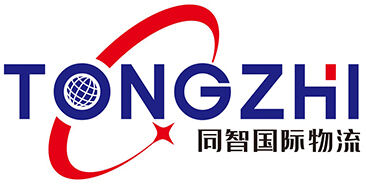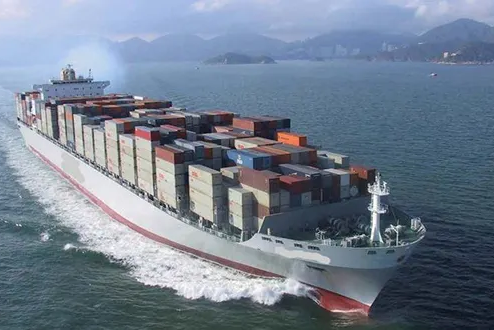Containerfrachtverkehr ist die Grundlage des weltweiten Handels und ermöglicht die effiziente und sichere Bewegung von Waren auf der ganzen Welt. Mit dem stetig wachsenden Bedarf an internationalen Handel müssen Unternehmen die Feinheiten des Containerfrachtverkehrs verstehen, um ihre Logistikprozesse zu optimieren. Dieser Artikel untersucht die besten Praktiken und wesentlichen Aspekte zur Maximierung der Effizienz im Containerfrachtverkehr.
Containerfrachtverkehr verstehen
Containerfracht beinhaltet den Transport von Waren in großen, standardisierten Containern. Diese Containertypen kommen in verschiedenen Größen vor, wobei die am häufigsten verwendeten die 20-Fuß- und 40-Fuß-Container sind. Die Standardisierung ermöglicht einen reibungslosen Transfer zwischen Schiffen, Lkws und Zügen, was es zu einem vielseitigen und effizienten Transportmittel macht.
Hauptvorteile der Containerfracht
Effizienz: Container sind auf eine einfache Bearbeitung und Stapelbarkeit ausgelegt, was den Lade- und Entladeprozess an Häfen beschleunigt. Diese Effizienz führt zu kürzeren Transitzeiten und reduzierten Kosten.
Sicherheit: In Containern transportierte Waren sind weniger anfällig für Schäden und Diebstahl. Die robuste Bauweise der Container bietet hervorragenden Schutz vor den Elementen und potenziellen Diebstählen.
Kosteneffizienz: Containerfracht ist im Allgemeinen kostengünstiger als andere Transportarten, insbesondere bei langstreckigen internationalen Versendungen. Die Möglichkeit, mehrere Sendungen in einen Container zu konsolidieren, senkt die Kosten weiter.
Vielseitigkeit: Container können eine große Vielfalt an Waren transportieren, von Rohstoffen und Maschinen bis hin zu verderblichen Gegenständen und fertigen Produkten. Spezialcontainer, wie gekühlte Einheiten (Reefers), decken spezifische Bedürfnisse wie Temperaturreglerung ab.
Best Practices für Containerfracht
Den richtigen Containertyp auswählen
Die Auswahl des richtigen Containertyps ist entscheidend für die sichere und effiziente Fracht. Standard-Trockencontainer eignen sich für die meisten Arten von Ladung, aber Unternehmen sollten bei speziellen Anforderungen auf Spezialcontainer zurückgreifen:
Gekühlte Container (Reefers): Für verderbliche Waren mit Temperaturregelung.
Offen-Top-Container: Für überdimensionale Ladungen, die nicht in einen Standardcontainer passen.
Flachracks-Container: Für schwere und klobige Gegenstände wie Maschinen und Fahrzeuge.
Optimieren Sie die Containerauslastung
Die maximale Nutzung des verfügbaren Raums innerhalb eines Containers kann die Versandkosten erheblich senken. Unternehmen sollten:
Richtig verpacken und stapeln: Stellen Sie sicher, dass Waren fest und sicher verpackt sind, um Verschiebungen während der Fahrt zu verhindern.
Paletten und Kisten verwenden: Ermöglichen Sie eine einfache Bearbeitung und einen effizienten Raumnutzen.
Gewichtsverteilung ausbalancieren: Verteilen Sie das Gewicht gleichmäßig, um Stabilität zu gewährleisten und Schäden zu vermeiden.
Erweiterte Tracking-Systeme implementieren
Echtzeit-Tracking und -Überwachung von Sendungen bieten wertvolle Einblicke und erhöhen die Transparenz während des gesamten Versandprozesses. Moderne Tracking-Systeme bieten:
Echtzeit-Ortsaktualisierungen: Halten Sie Unternehmen über den Standort und den Status ihrer Sendungen auf dem Laufenden.
Zustandsüberwachung: Stellen Sie sicher, dass temperatursensible Waren im erforderlichen Bereich bleiben.
Prädiktive Analyse: Erkennen Sie potenzielle Verzögerungen voraus und optimieren Sie Routen für schnellere Lieferungen.
Sicherstellen der Einhaltung von Vorschriften
Die Einhaltung internationaler Versandvorschriften ist essenziell, um Verzögerungen und Strafen zu vermeiden. Unternehmen sollten:
Bleiben Sie über Handelsvorschriften informiert: Verfolgen Sie aktuelle Import-/Exportgesetze und Zollanforderungen für jedes Ziel.
Erstellen Sie genaue Dokumente: Stellen Sie sicher, dass alle notwendigen Dokumente, wie Frachtbriefe, Ursprungszeugnisse und Zolldeklarationen, korrekt ausgefüllt und rechtzeitig eingereicht werden.
Arbeiten Sie mit erfahrenen Zollvermittlern zusammen: Gewährleisten Sie einen reibungslosen Zollabgang und minimieren Sie das Risiko von Konformitätsproblemen.
Nutzen Sie Technologie zur Steigerung der Effizienz
Technologie spielt eine entscheidende Rolle bei der Optimierung von Containerschiffahrtsoperationen. Unternehmen sollten folgende Maßnahmen ergreifen:
Schiffahrtsmanagement-Software: Vereinfachen Sie Buchungs-, Dokumentations- und Trackingprozesse.
Automatisierte Ladegutshandlungssysteme: Beschleunigen Sie Lade- und Entladeprozesse an den Häfen.
Blockchain-Technologie: Verbessern Sie Transparenz und Sicherheit in der Lieferkette durch die Bereitstellung eines unveränderlichen Aufzeichnungssystems für Transaktionen und Bewegungen.
Wichtige Aspekte bei der Containerschiffahrt
Kostenmanagement
Versandkosten können erheblich den Gewinn eines Unternehmens beeinflussen. Schlüsselstrategien zur Kostenbewältigung umfassen:
Konsolidierung von Sendungen: Kombinieren mehrere Sendungen in einen Container, um von Skaleneffekten zu profitieren.
Vertragsverhandlungen: Sichern Sie günstige Konditionen und Bedingungen mit Reedern und Frachtförderern ab.
Routeoptimierung: Wählen Sie die effizientesten und kostenwirksamsten Routen, um Transportzeiten zu minimieren und Treibstoffverbrauch zu senken.
Risikomanagement
Die Bewältigung von Risiken im Zusammenhang mit Containerschiffahrt ist essenziell, um die sichere und pünktliche Lieferung von Waren sicherzustellen. Berücksichtigen Sie folgende Aspekte:
Versicherungsschutz: Schützen Sie sich vor potenziellen
Verlusten aufgrund von Schäden, Diebstahl oder Verzögerungen.
Notfallplanung: Entwickeln Sie Pläne, um unerwartete Störungen wie Hafenstreiks oder Naturkatastrophen zu bewältigen.
Regelmäßige Audits: Führen Sie Audits von Versandprozessen und Partnern durch, um Risiken zu identifizieren und zu mindern.
Nachhaltigkeitspraktiken
Nachhaltigkeit gewinnt weltweit in der Logistik an Bedeutung. Unternehmen können öko-freundliche Praktiken wie folgt umsetzen:
Verwendung von kraftstoffeffizienten Schiffen: Wähle Reedereien, die moderne, kraftstoffeffiziente Schiffe einsetzen, um Kohlendioxidemissionen zu reduzieren.
Umsetzung grüner Verpackungslösungen: Verwende recycelbare und biologisch abbaubare Verpackungsmaterialien, um den Umweltbelastungen zu minimieren.
Kompensation von Kohlendioxidemissionen: Nimm an Klimaschutzprogrammen zur Neutralisierung des Umweltfußabdrucks der Versandaktivitäten teil.
Schlussfolgerung
Containerfracht ist ein wesentlicher Bestandteil des internationalen Handels, der Effizienz, Sicherheit und Kosteneffektivität bietet. Durch die Implementierung bester Praktiken wie die Auswahl des richtigen Containertyps, die Optimierung der Containerausnutzung, den Einsatz fortschrittlicher Tracking-Systeme, die Sicherstellung der Regelungskonformität und die Akzeptanz von Technologie können Unternehmen die Vorteile der Containerfracht maximieren. Darüber hinaus sind Kostenmanagement, Risikominderung und Nachhaltigkeitspraktiken entscheidend für den Erhalt eines wettbewerbsfähigen Vorteils auf dem globalen Markt.







































